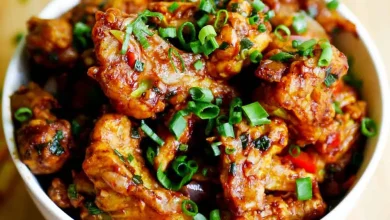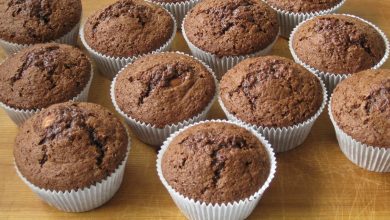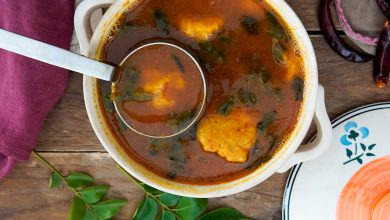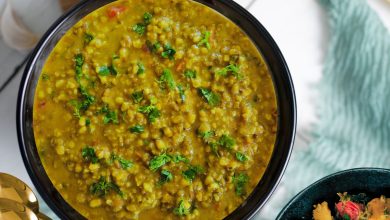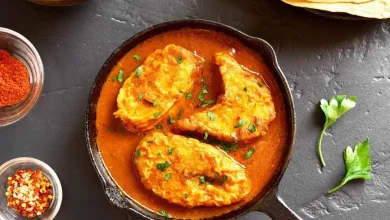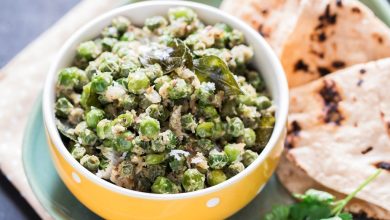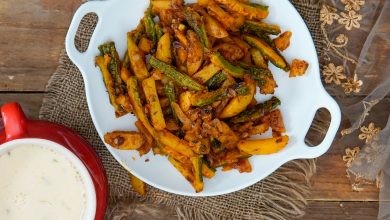Upvaas Thalipeeth: Fasting-Friendly Maharashtrian Millet Flatbread
Upvaas Thalipeeth Recipe: A Delicious Maharashtrian Fasting Delight
Upvaas Thalipeeth is a traditional Maharashtrian dish, often prepared during fasting periods like Navratri or other religious festivals. It’s a flavorful, wholesome, and gluten-free flatbread made using a mix of different flours like Barnyard Millet (Bhagar), Rajgira (Amaranth), Tapioca (Sago), and Singoda (Water Chestnut), and complemented with grated potatoes, cumin, coriander, and green chilies. This dish is perfect for a light breakfast or dinner, offering a great balance of taste, nutrition, and satiety while keeping in line with the dietary restrictions during fasting.
Here’s a detailed recipe for Upvaas Thalipeeth, a true celebration of Maharashtrian flavors, and an easy dish to prepare even for those new to fasting cuisine.
Ingredients:
| Ingredient | Quantity |
|---|---|
| Barnyard Millet (Bhagar Flour) | 1/2 cup |
| Rajgira Flour (Amaranth Flour) | 1/2 cup |
| Tapioca Flour (Sago) | 1/2 cup |
| Singoda Flour (Water Chestnut) | 1/2 cup |
| Potatoes (Aloo) – peeled and grated | 2 |
| Cumin seeds (Jeera) | 1 teaspoon |
| Green Chillies – crushed or finely chopped | 2 to 3 |
| Fresh Coriander (Dhania) Leaves | 2 to 3 teaspoons |
| Groundnut powder (Peanut flour) | 2 tablespoons |
| Salt | To taste |
| Ghee | As required for cooking and greasing |
Preparation Time: 20 minutes
Cooking Time: 30 minutes
Total Time: 50 minutes
Servings: 4
Cuisine: Maharashtrian
Course: North Indian Breakfast
Diet: Vegetarian, Gluten-Free
Instructions:
-
Roasting the Flour Mixture:
- Begin by mixing all the flours—Barnyard Millet (Bhagar), Rajgira, Tapioca, and Singoda—in a large mixing bowl.
- Place a heavy-bottomed pan over low heat and dry roast the flour mixture for about 2 to 3 minutes. Stir continuously to ensure the flours do not burn and you get the typical roasted aroma that enhances the flavor of the Thalipeeth.
- Once roasted, set the mixture aside and allow it to cool. This roasted flour blend will be used for the dough preparation.
-
Preparing the Thalipeeth Dough:
- In the same mixing bowl, add the grated potatoes, cumin seeds, chopped green chilies, fresh coriander leaves, groundnut powder, and salt.
- Gradually add some water to the mixture and knead it into a soft dough. Be cautious not to add too much water at once; add it slowly until the dough reaches a pliable consistency, soft enough to be shaped into rounds but firm enough to hold together.
- Divide the dough into 4 to 5 equal portions, each of which will become one Thalipeeth.
-
Shaping the Thalipeeth:
- Grease a non-stick griddle or pan with a little ghee to prevent the dough from sticking and to add flavor.
- Take one portion of the dough and place it onto the griddle. Use your fingers to pat the dough into a round shape (approximately 4 to 5 inches in diameter). If the dough is sticking to your fingers, you can grease them lightly with some ghee or use a plastic sheet or banana leaf for ease.
- Use your finger to make a hole in the center of the dough and then four more holes around it. This gives the Thalipeeth its characteristic design and allows the ghee to seep into the dough, giving it a richer taste.
-
Cooking the Thalipeeth:
- Drizzle a little ghee into the holes you made in the dough to ensure it cooks evenly and gets a golden-brown color.
- Cover the pan with a lid and cook on low heat for 5-7 minutes, or until the underside of the Thalipeeth turns a crisp golden-brown. The low heat ensures that the dough cooks thoroughly without burning.
- Flip the Thalipeeth carefully and cook for another 1-2 minutes on the other side to ensure it’s cooked through.
-
Serving the Thalipeeth:
- Once all portions of the dough have been cooked, serve the Upvaas Thalipeeth hot and fresh. For a traditional touch, serve it with Dhaniya Pudina Chutney (Coriander Mint Chutney) and Boondi Raita to complement the flavors.
- This combination of flavors—spicy, tangy chutney, and creamy raita—pairs perfectly with the earthy and satisfying taste of the Thalipeeth, making for a light yet filling meal.
Cooking Tips:
- If you are unable to find one of the flours used in this recipe, feel free to substitute it with other fasting-friendly flours such as buckwheat flour or arrowroot powder. However, it may slightly alter the texture and flavor.
- If the dough feels too dry or crumbly, add a little more water to bring it together. Conversely, if the dough is too wet, add a little more flour.
- Upvaas Thalipeeth can be stored in an airtight container for a couple of days if you have leftovers. It’s also a great dish to pack for lunch or picnics.
- For a slightly crispier texture, you can increase the heat slightly towards the end of the cooking process, but be sure to watch it carefully to prevent burning.
Upvaas Thalipeeth is not only a fasting food but also a wholesome meal you can enjoy any time. Its rich flavor, combined with the health benefits of the flours and potatoes, makes it an ideal choice for those seeking a balanced, nutritious breakfast or dinner. Give this recipe a try and enjoy the authentic flavors of Maharashtrian cuisine, perfect for any occasion!

